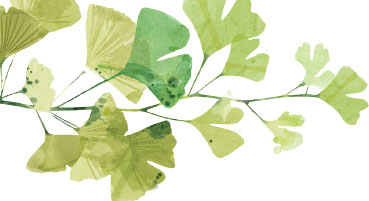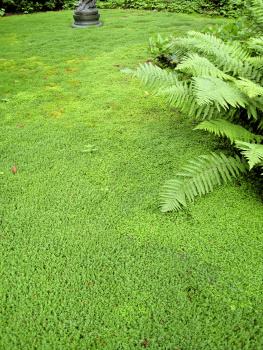

OTHER TITLES IN THE YOUNG NATURALISTS SERIES
Awesome Snake Science! 40 Activities for Learning About Snakes
Birdology: 30 Activities and Observations for Exploring the World of Birds
Insectigations: 40 Hands-on Activities to Explore the Insect World
Treecology: 30 Activities and Observations for Exploring the World of Trees and Forests

Copyright 2019 by Michael Elsohn Ross
All rights reserved
Published by Chicago Review Press Incorporated
814 North Franklin Street
Chicago, Illinois 60610
ISBN 978-1-61373-737-8
Library of Congress Cataloging-in-Publication Data
Names: Ross, Michael Elsohn, 1952- author.
Title: Plantology : 30 activities and observations for exploring the world of plants / Michael Elsohn Ross.
Description: Chicago, Illinois : Chicago Review Press Incorporated, [2019] | Audience: Age 7+ | Includes bibliographical references and index.
Identifiers: LCCN 2018028752 (print) | LCCN 2018029606 (ebook) | ISBN 9781613737385 (adobe pdf) | ISBN 9781613737408 (epub) | ISBN 9781613737392 (kindle) | ISBN 9781613737378 (paperback)
Subjects: LCSH: PlantsJuvenile literature.
Classification: LCC QK49 (ebook) | LCC QK49 .R67 2019 (print) | DDC 581dc23 LC record available at https://lccn.loc.gov/2018028752
Cover and interior design: Sarah Olson
Cover photos: FRONT: pond lily, cardinal flowers, coleus, bee fly, redshank moss, and iris seeds from Wikimedia Commons; butterfly, kiwi, and root from Shutterstock.com. BACK: vine, butterfly, and flower from 123rf.com.
Interior illustrations: Lindsey Cleworth Schauer, ; all other illustrations by Michael Elsohn Ross
Interior photos: Wikimedia Commons unless otherwise indicated
Printed in the United States of America
5 4 3 2 1


This book is dedicated to my grandnieces, Eloise and Georgia; my grandnephew, Levi; my granddaughter, Genesis; and other young people around the world who are the future caretakers of our plant friends.

Contents



Acknowledgments

I thank two mentors, Bob Fry and Carl Sharsmith, who are no longer living but continue to inspire me to investigate the plant life of the Sierra Nevada. Im grateful to Professor Everett Schlinger, who opened my eyes to insect-plant relationships, especially pollination, and Professors Joe McBride and Ed Stone, who rekindled my connection to plants. Most importantly, thank you, Davy, for teaching me about plants when we were kids in the woods.

Introduction

O ne of my earliest memories is of a secret place inside a shady enclosure of vines at my home when I was three years old. Later, I lived in another town, in a newly built neighborhood bordered by woods that I explored with my friends. It was here that I truly entered the realm of plants. I encountered thorny briars, thick grapevines, velvet moss carpets, wild garlic, and stately rhododendron groves. I felt at home in this world. Without being aware of it, I had become a plant person.
By the time I was 10 years old, this wooded wonderland was transformed into more streets and houses. This great loss both saddened and angered me. How could people do this?
In college I studied botany, and when I was 22 years old I got a job at Yosemite National Park in the Sierra Nevada mountains of California, a land rich with an amazing variety of plants and people to learn from. Living here for over 40 years now and teaching people about Yosemite has been a continuous learning experience. There are always new questions, mysteries, and things to notice that I was unaware of before.
I hope this book encourages you, too, to notice and learn about the plants you see around you every day or when you travel to a new place. Maybe you will simply come to appreciate them in a new way, or even begin your own life journey into wilderness study.
Happy reading and exploring!

1
What Is a Plant?
W hen you peer into a full-length mirror you see a reflection of yourself: a human figure made up of all your body parts. Each of these parts has more parts: your head is made up of ears, eyes, a nose, a mouth, a chin, a forehead, and cheeks. Humans and many other animals have parts in twos or multiples of two.
Now compare yourself with the body of a plant. It obviously does not look like a person. So how do we describe a plant form?
Lets use a buttercup as an example. The buttercup plant is anchored by roots, out of which grows a stem. From the stem grow other stems, each bearing leaves, buds, and flowers. Each of these parts has more parts, just as a human arm has a hand with fingers and fingernails.

Look for buttercups growing in lawns and parks.
 TRY THIS!
TRY THIS!PLANT JOURNAL
Scrutinize, scribble, sketch! A plant journal can be like a travelogue describing the plants you meet. Make a journal and use it to record observations and sketches on your own or as you work through the activities in this book.
MATERIALS
- Notebook with unlined pages
- Colored markers, or scissors and old seed catalogs or gardening magazines (to decorate cover)
- Glue
- Your sharp eyes
- Magnifying glass
- Pen or pencil
- Colored pencils






























 TRY THIS!
TRY THIS!